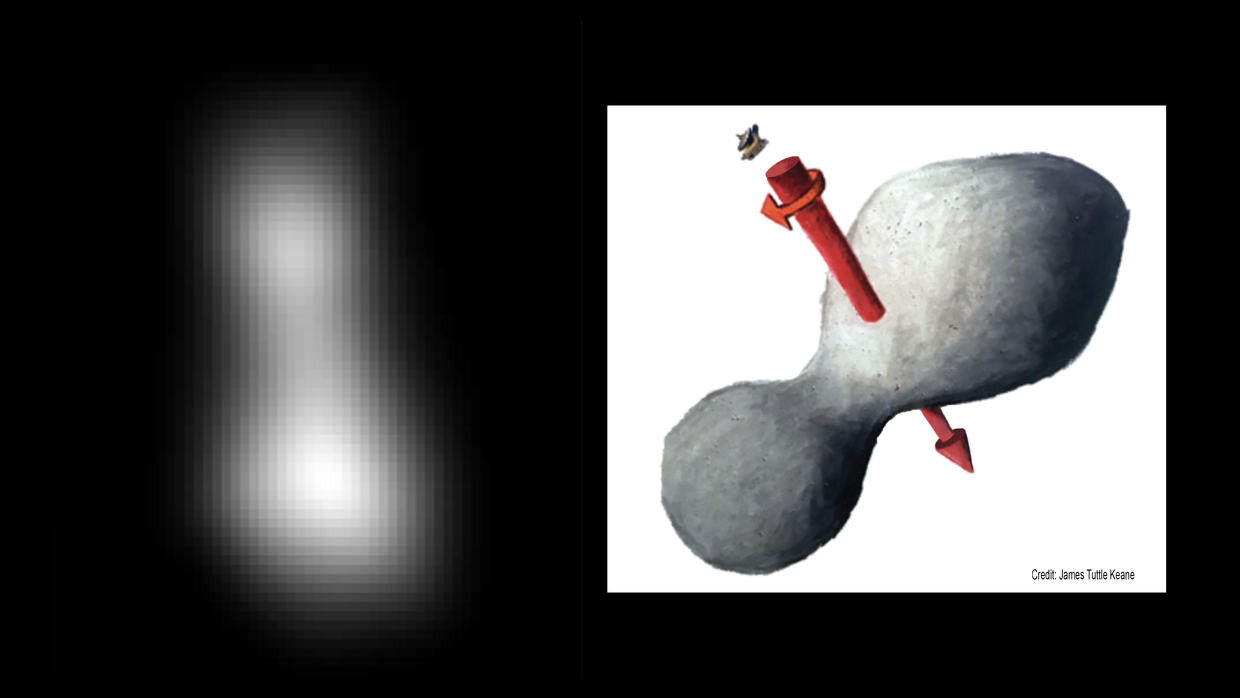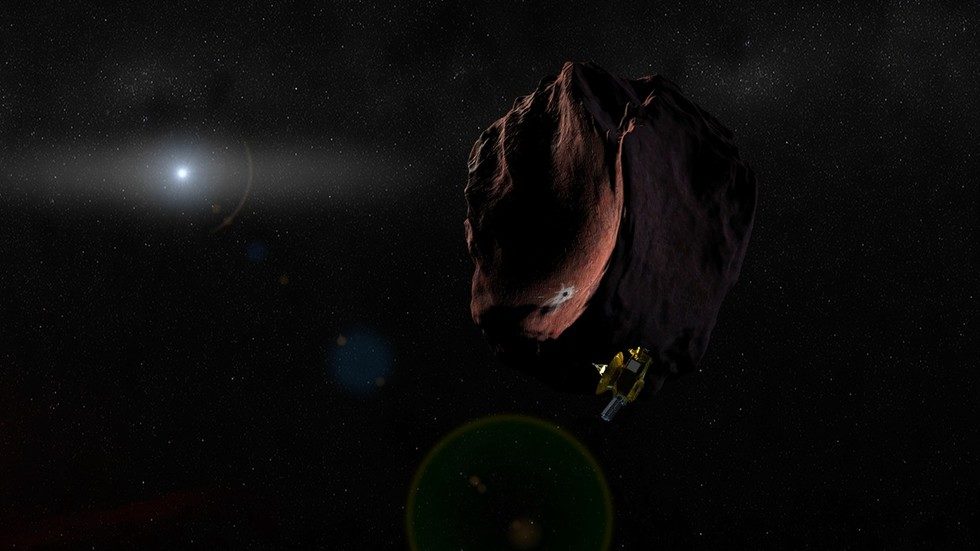
The New Horizons spacecraft flew past Ultima from the Kuiper Belt in the early hours of New Year's Day, making it the "farthest exploration of any world in history - 4 billion miles from the Sun," said the project's principal investigator Alan Stern, of the Southwest Research Institute in Boulder, Colorado.
"The data we have look fantastic and we're already learning about Ultima from up close. From here out the data will just get better and better," Stern added.

The New Horizons spacecraft took the image just 2,200 miles (3,500km) from the bowling-pin shaped Ultima, which appears to be spinning end over end, measuring approximately 20 by 10 miles (32 by 16km). However, it is also possible that the image shows two smaller objects orbiting each other.
New Horizons has been a groundbreaking mission for NASA since its launch in 2006. Before exploring the edge of the solar system, the spacecraft was the first to capture Pluto. It's scheduled to continue exploring the Kuiper Belt until at least 2021.



Comment: This is just the latest in a number of recent revelations from NASA's New Horizons mission: